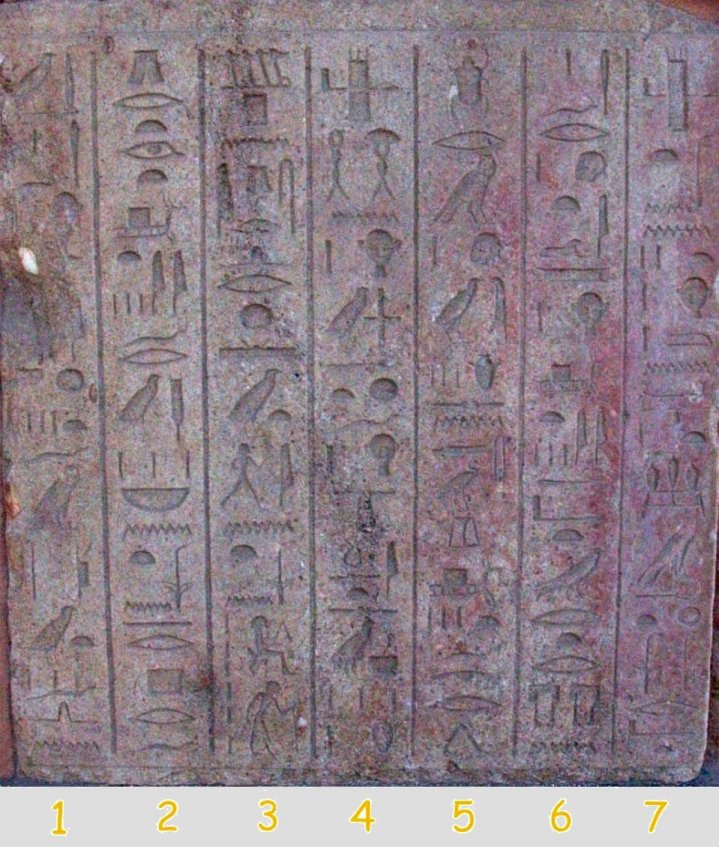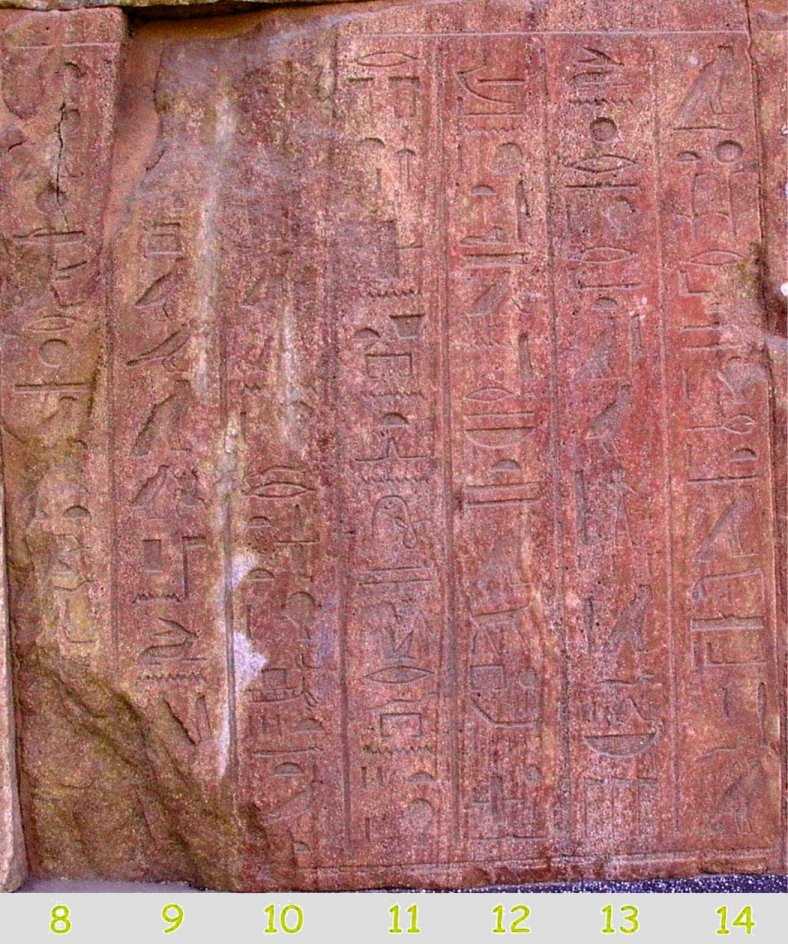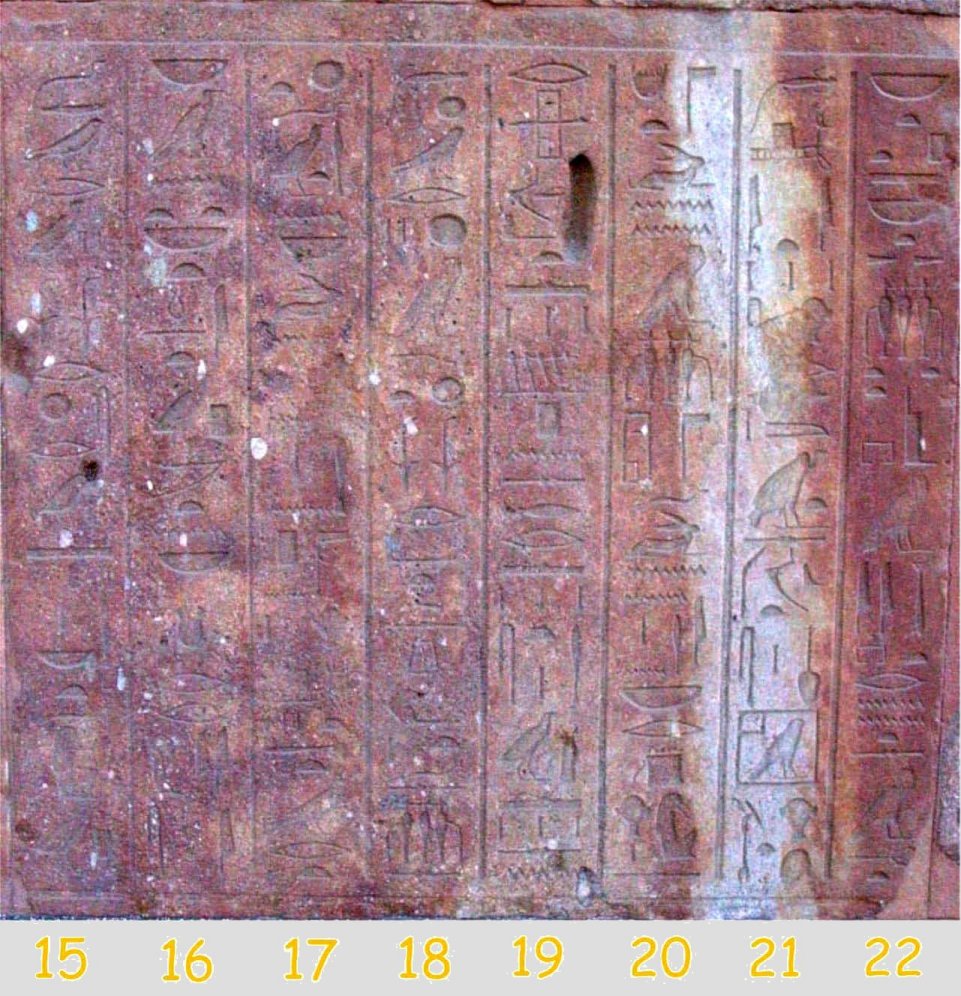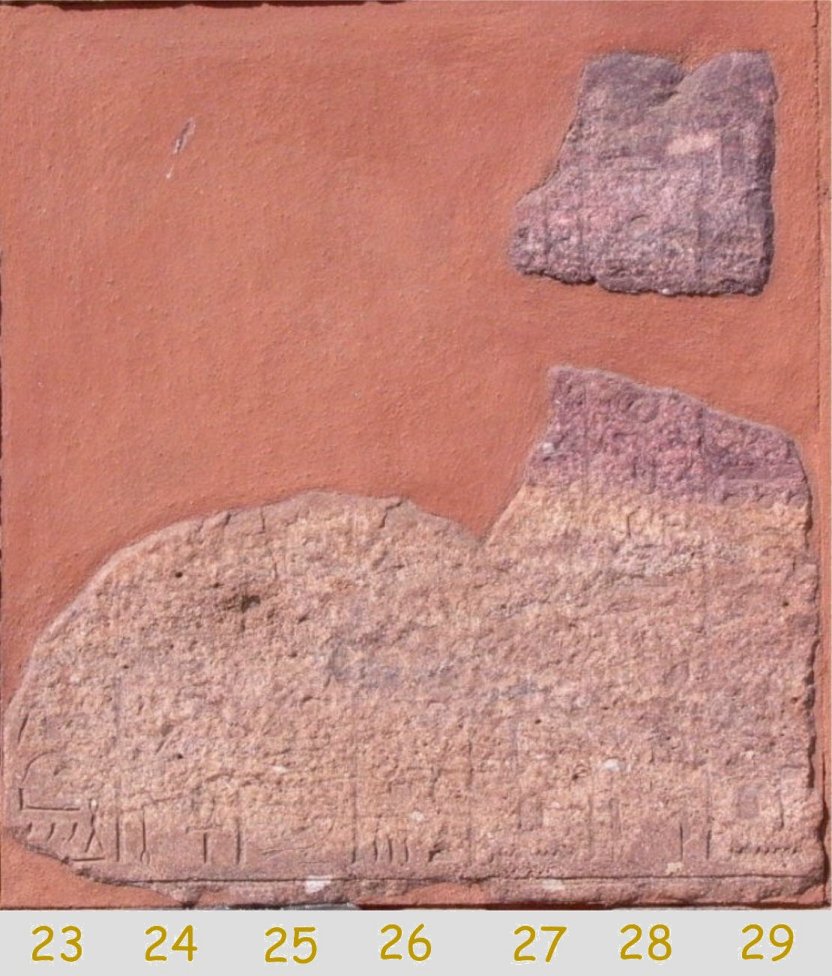|
Red Chapel of Hatshepsut |
last update: 29.08.2010 |
Historical Texts on the South-Wall
Election of Hatshepsut by the King of Gods
| Historical Text
The step of Hatshepsut from regent to Pharao which resulted in a double kingship was surely a violation of the Maat - because there could be only one "Horus". One can only speculate about the motivation of Hatshepsut or about the political background, but one must assume that this step had been carefully prepared. |
| Gundlach (1998) has described the steps to achieve the kingship and their ritual execution especially using Hatshepsut as an example. Apart from the legitimation by divine generation and birth - which, naturally, attained validity only by taking over the government and therefore, has been put down in writing only after the event - the accession to the throne must be also visibly prepared, e.g. because of a designation by the predecessor and/or a divine oracle. The designation by the predecessor is not applicable to Hatshepsut, of course she claimed to have been chosen as the successor to the throne by her father, Thutmosis I, but probably only afterwards, because Thutmosis II followed Thutmosis I. |
| Of course, the election by Amun-Ra, the King of Gods, could "be organized" by a public oracle and, thus, became for all those present (a) "real history". As a rule the public election by an oracle has been "celebrated" after the accession to the throne. However, since Hatshepsut as the regent actually held all political power it might not have been a problem to get the oracle "celebrated" before her accession to the throne. |
|
The step to kingship are very well testified by texts on the monuments
of Hatshepsut. Thus, the report about the election by an oracle of Amun-Ra and also
about the
coronation of the queen are presented on the external walls of the Red Chapel.
With regard to the coronation report on the Red Chapel there is a parallel
text at Djeser djeseru, there, however, as continuation of the Myth of
Birth shown on the northern wing of the 2nd portico. The "historical texts" (s. a. "Texts Historique", Lacau and Chevrier, 1977 - 1979) are presented on the 2nd register (from below), i.e. the first row of the red quartzite blocks, particularly on the southern and northern side wall. |
| On the south wall the report about the oracle was written on the blocks: 222, 35, 184, 295 (from left to the right). I am indebted Michael Tilgner for the following summary of Lacau and Chevrier (1977 - 1979), as well as transcription and German translation of the text on these 4 blocks. |
|
Direction of Reading
The direction of reading is exceptional. The text refers to the queen who enters the chapel at the western gate (i.e. from the left side if seen from standing outside in front of the south-wall). The queen turns to the east (right) part of the chapel - as to say "face to face - where the god Amun is located. Thus, the signs should be read - because the text addresses the queen - from right to left (and vice versa on the north-wall). This is indeed the case because all signs are aligned to the right and, therefore, to be read from right to left inside a column. However, the complete text is written retrograde, i.e. deviating from the alignment of the signs blocks and columns successively are to be read from left to right. In their publication about the Red Chapel Lacau and Chevrier discussed the reasons (1977 - 1979; in §155). |
| The chapel was enclosed into a hall whose walls were about 20 m long, so that a corridor was formed around the chapel. If the columns would have been arranged in the direction of reading (i.e. from right to left), then one would have had to go up to the end of the corridor in order to look for the beginning of the text - that does not appear very convenient. |
| Lacau and Chevrier refer to parallel places where the retrograde way of writing was used for the same reason (e.g. the corresponding text at Deir el-Bahari). |
| Apart from Lacau u. Chevrier (1977 - 1979) Grimm, A., Schoske, S. (1999), Gundlach, R. (1998) and Malte Römer (2003) were consulted. |

|
| Block 222 [m-x.t nn] (1) wDA Hm=f Hr bjA[.t] psD.t=f m Sms.w.t=f "[Afterwards] his majesty [= Amun] took off to work a 'miracle'; his Ennead (was) in his entourage."
|

|
Block 35
(14) m-x.t-nn rdj.t=s sy Hr X.t=s m-bAH-a Hm=f "Then she buckled on her belly before his majesty" |

|
|
m - Block 184 - (15) Dd "and said:"
- oder auch:
|

|
| Block 295 This block is difficult to read! Lacau / Chevrier made an attempt to reconstruct the text: (23) ... mH Ha=s - oder - Sd Ha=s ... "... who nourishes her body ..."
|
| With the help of the version of the oracle text from Deir
el-Bahari Lacau and Chevrier try to complete the version of the Red Chapel.
Due to the version from Deir el Bahari the following sings can be
complemented in the rows 27 and 28:
|
| In conclusion it has to be noted that after the
publication of Lacau and Chevrier (1977 - 1979) William Murnane has
suggested an alternative reading or translation for some passages
(Murnane, W., "Unpublished Fragments of Hatshepsut's Historical
Inscription from Her Sanctuary at Karnak", Serapis 6, 1980). Base on old
photographs of single blocks which were in the possession of the Oriental
Institute, Chicago, he discussed in this publication not only the hardly
readable block 295, but also the blocks 286 and
280 which likewise belong
in the 2nd register and which already had been reused in the antiquity (from Rameses II) whereby their inscriptions were destroyed to a great extent.
Since Murnane himself classified the differences to the publication of Lacau and Chevrier as "not of major significance", here it is just referred to his publication. |